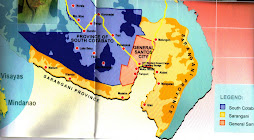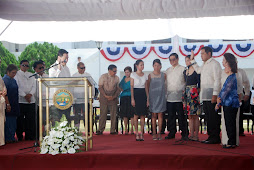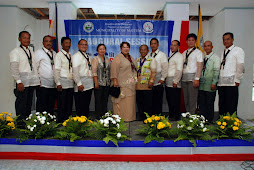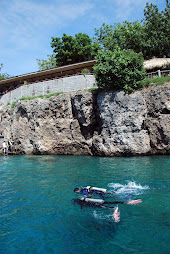MALAPATAN, Sarangani (May 29, 2008) – Completion of the Japanese government's grant of a 10-classroom building timely responds to Malapatan National High School's (MNHS) need to replace old classrooms ruined by flashfloods.
The two-storey MNHS building was inaugurated in a new site to provide better learning environment for the students this school year.
"When I saw the old building that the school has been using despite being declared unsafe, I can imagine the difficulties the students and teachers had to go through," Shinichi Kakui, First Secretary of the Economic Section of the Embassy of Japan, said during the inauguration ceremony Wednesday (May 28).
"I then understand why you have to use the school's kiosks and stage as alternative classrooms to accommodate the growing number of enrollees yearly," Kakui said.
"With the new building at hand, MNHS can now accept more enrollees and provide better learning environment for the students,"
The project has a total cost of P8.5 million. P4.4 million came from Japan's Grant Assistance for Grassroots Human Security Projects (GGP) and the rest are counterpart funding from Sarangani provincial government and the local government of Malapatan.
"As such more students from Muslim, Blaan indigenous group and Christian communities in the impoverished barangays of Malapatan can now be accommodated," the Japanese official said.
"I hope that this project will contribute to the strengthening of friendship and deepening of understanding between our two people," Kakui said.
For his part, Governor Migs Dominguez said "we always struggle for development."
"We have to make investments in education and our human capital," Dominguez added.
Mayor Aida Singcoy reported that MNHS's annex high schools in far-flung villages of Kihan and Kinam also need similar infrastructure.
Kinam and Kihan are among interior barangays of Malapatan where residents have to walk for long distances or ride a horse to bring their products to the town site. For the youth, attending school in MNHS downtown everyday by foot is impossible.
Among the province's seven municipalities, Malapatan has mostly received externally-assisted projects such as from the United States Agency for International Development (USAID) and from the national government's Kapit-Bisig Laban sa Kahirapan-Comprehensive and Integrated Delivery of Social Services (KALAHI-CIDSS) through road constructions and school buildings.
"For the children of Sarangani, we need more and more classrooms," Schools Division Superintendent Deborah Adrales said. (Russtum G. Pelima/SARANGANI INFORMATION OFFICE)
Subscribe to:
Post Comments (Atom)





















































No comments:
Post a Comment